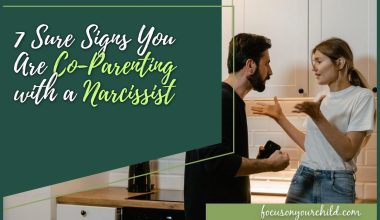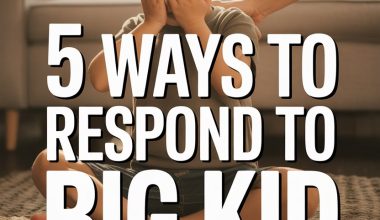Every parent has been there—face flushed, fists clenched, the urge to yell bubbling up like a fizzy drink that’s been shaken a bit too hard.
Suddenly, your adorable child seems less like the apple of your eye and more like a tiny hurricane in mismatched socks. And yet, deep down, you want to reach them, not just react to them.
But how do you actually connect with your child when your own nerves are plucked like guitar strings at a toddler dance party?
Why Getting Mad Isn’t the End of the World
Confession: Everyone gets mad. Even that annoyingly calm mum from playgroup who claims her toddler has never thrown a tantrum (sure, Jan).
Anger is a human emotion, not a parenting fail. In fact, modeling healthy anger, rather than suppressing it, shows kids that emotions aren’t shameful—they’re natural.
Research from the University of Cambridge found that when parents acknowledge and manage their own strong feelings, kids develop stronger emotional intelligence.
It’s all about how you handle it—yelling “Eat your broccoli or ELSE” from behind the fridge door isn’t quite the same as having a calm (or even semi-calm) chat.
Buy Yourself a Moment
White-hot fury can make anyone say things they regret. Experts like Dr. Laura Markham, author of “Peaceful Parent, Happy Kids,” recommend physical distance as a first step.
Announce what you’re doing, even if it feels silly. “Mummy’s feeling really angry right now. I need to step away for a minute.” This is not a dramatic exit; this is pressing your own ‘pause’ button.
Stepping away is not letting your child ‘win’—it’s showing them emotional regulation in action. And it lets you breathe, swear privately, and maybe even grab a biscuit (no judgment).
Don’t Expect Perfection—From Yourself or Them
You’re going to mess up. Your child will, too.
Connection doesn’t mean getting it right every time. It means coming back together, again and again, even when you’ve both lost the plot.
Try apologizing when you lose your cool. “I yelled. That was wrong. I’m sorry. I love you.” Repair, not perfection, is the gold standard of healthy attachment according to attachment theory.
Each time you reconnect after a blow-up, you teach resilience—and that love sticks around, even when tempers fray.
The Power of Naming Emotions
Ever notice how a tantrum dials down a notch when someone says, “You’re really angry, aren’t you?” Naming feelings has a calming effect. Dr. Daniel Siegel, co-author of “The Whole-Brain Child,” calls this “name it to tame it.”
When your child is losing it, or you feel your own anger rising, try putting words to what’s happening.
“You’re upset because I turned off the TV.” Or, “I’m frustrated because I’ve asked you three times to put on your shoes.” This isn’t about blame—it’s about acknowledging the storm, not pretending it’s sunny.
Connection Before Correction
If your child feels misunderstood or shamed, her brain goes straight into defense mode. Barking orders might get short-term compliance, but you’ll miss a moment to really connect.
Take a breath, drop to their eye level, and offer a gentle touch or hug—if they’re up for it.
Dr. Becky Kennedy (a.k.a. Dr. Becky at Good Inside) suggests that physical connection—holding a hand, a soft pat on the back—can help a child’s nervous system reset.
Even if you’re still angry, a loving gesture says, “I’m here. We’ll get through this together.” Then, when everyone’s calm, you can talk about the shoes, the broccoli, or whatever started it.
Use Humor When You Can (But Don’t Force It)
Sometimes a well-timed joke, a silly face, or a cheesy accent can diffuse tension faster than a referee at a sibling wrestling match.
A little lightness reminds everyone that you’re on the same team—even if nobody’s feeling particularly jovial in the moment.
But don’t fake it. Kids are like bloodhounds for insincerity.
If the best you can muster is, “Well, this day’s a write-off, eh?” with a wry smile, you’re still showing your child that you can handle big feelings—even with a sense of humor.
Give Yourself Permission to Cool Down
There’s a reason “count to ten” is classic advice.
Your brain, when furious, is about as logical as a toddler on no sleep. Cooling off might mean counting, breathing, or even belting out your favorite 90s ballad in the loo.
Try a grounding exercise: Name five things you can see, four you can touch, three you can hear, two you can smell, and one you can taste. Simple, but surprisingly effective at dragging your mind away from “must destroy the snack cupboard.”
Share the Story—After the Storm
When things have calmed down, talk about what happened—like narrating a story together. “Wow, we were both really upset. You were angry because I said no more biscuits. I was angry because I didn’t feel listened to.”
Encouraging kids to talk about their side, even if it sounds bonkers (“You said I could have biscuits forever!”), builds trust.
This is where empathy and connection flourish. It’s not about who was right, but about understanding each other’s hearts—a win for everyone.
Know Your Triggers
Every parent’s got a “thing”: shoes on the sofa, backtalk, food flung at the wall.
Becoming aware of your danger zones helps you prepare. Maybe you set up a ritual for after work (five minutes alone in your room before you face the dinner-table circus), or you keep a “rage playlist” handy for traffic jams.
Therapists often suggest tracking your own triggers for a week or two—just jotting them down can make you feel less surprised when they crop up. If you know your own patterns, you’re less likely to be blindsided.
Your Kid Isn’t Trying to Ruin Your Life (Even If It Feels That Way)
Little ones are experts at pushing buttons you didn’t know you had. But most of the time, challenging behaviour is about unmet needs, not malice.
Hungry kids, tired kids, overwhelmed kids—they don’t have a secret meeting at night to plot your downfall.
Reminding yourself, “She’s having a hard time, not giving me a hard time,” as Dr. Ross Greene puts it, can shift the whole interaction.
Compassion doesn’t mean excusing poor choices—but it does mean you keep your relationship at the centre, even when you’re ready to turn in your parenting badge.
Triage: Some Days, Connection Means Survival
Sometimes, the best you can do is keep everyone fed, vaguely clean, and (ideally) in one piece. On those days, don’t set yourself up for Pinterest-level moments or meaningful eye contact across a lovingly prepped quinoa salad.
Connection can be a shoulder squeeze in the car, a gentle “I love you” at bedtime, or simply sitting next to your kid in silence. These small moments, strung together, build the trust that gets you through the big storms.
Repair Isn’t Optional—It’s Magic
Every rupture is a chance for repair. Kids don’t need flawless parents—they need honest ones.
At bedtime, or whenever you can, circle back: “Today was rough. I lost my temper. I’m sorry. I always love you, even when we’re mad.”
Dr. Ed Tronick’s “Still Face” experiments show that babies and children thrive when caregivers reconnect after upset moments. The magic isn’t in never fighting, but in always finding your way back to each other.
When To Seek Help
If you find yourself constantly angry, or if rage feels out of control, you’re not alone—and you’re not a bad parent. Sometimes, chronic stress, exhaustion, or mental health challenges can make connection feel out of reach.
Speaking to a GP, therapist, or a trusted friend can make all the difference. Support is out there, even when it feels like you’re the only parent who ever loses their cool. That’s simply not true.
The Messy, Beautiful Middle
Connecting with kids when you’re mad isn’t about never feeling anger.
It’s about returning—again and again—to that messy, beautiful middle where you and your child see each other clearly, warts and all.
No one remembers the perfect dinner or the pristine lounge; they remember the hugs after the storm, the “I’m sorry,” the laughter after tears.
You don’t have to be a Zen master—you just have to keep showing up. That’s the real connection, right there, snacks on the carpet and all.





